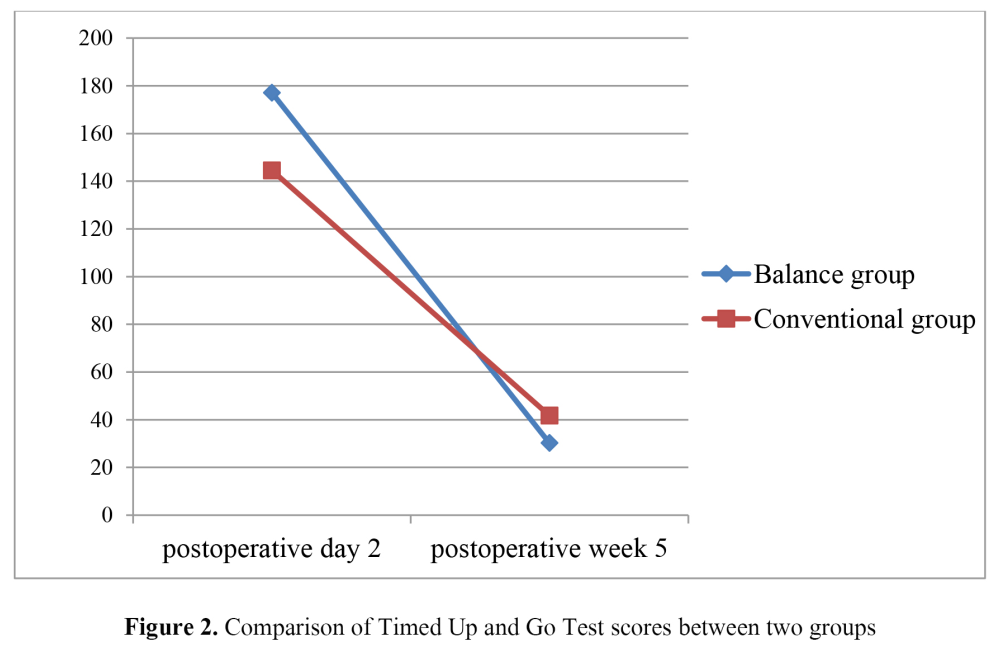EFFECTIVENESS OF EARLY BALANCE EXERCISES ON TOTAL HIP ARTHROPLASTY
DOI:
https://doi.org/10.55374/jseamed.v3i2.40Keywords:
Early Balance exercises, Total hip arthroplastyAbstract
Background: Patients receiving total hip arthroplasty (THA) without a rehabilitation program could develop functional limitation within one year after surgery. Exercise for balance control is critical for mobility, physical function, and prevention of falls. Few studies have investigated the effectiveness of balance training among THA patients.
Objective: The study aimed to investigate the effectiveness of early balance exercises on THA.
Methods: This study was a randomized control study for 30 patients undergoing unilateral THA. The postoperative rehabilitation program was started at the second postoperative day for every patient. All the postoperative patients were randomly assigned and equally allocated to balance and conventional groups. Patients in the balance group received typical exercises and balance exercises while those in the conventional group received typical exercises alone. Assessments were taken at postoperative day 2 (baseline) and week 5 using Breg Balance Scale for balance and Times Up and Go Test for ambulatory function. The differences between the two groups were analyzed.
Results: Statistically significant improvements were noted at the end of treatment by all outcome measures in both groups (p<0.05). However, the balance group showed better improvement in all outcome measures than the conventional group after the intervention period (p<0.05)
Conclusion: Early balance exercises added to typical exercises were more effective than conventional exercises in terms of improving balance and ambulatory function among patients with THA.
Downloads
Metrics
References
Galea MP, Levinger P, Lythgo N, Cimoli C, Weller R, Tully E, et al. A targeted home- and center-based exercise program for people after total hip replacement: a randomized clinical trial. Arch Phys Med Rehabil. 2008; 89: 1442-1447. DOI: https://doi.org/10.1016/j.apmr.2007.11.058
Guedes RC, Dias JMD, Dias RC, Borges VS, Lustosa LP, Rosa NMB. Total hip arthroplasty in the elderly: impact on functional performance. Rev Bras Fisioter. 2011; 15(2): 123-130. DOI: https://doi.org/10.1590/S1413-35552011000200007
Shan L, Shan B, Graham D, Saxena A. Total hip replacement: a systemic review and meta-analysis on mid-term quality of life. Osteoarthritis Research Society International. 2013; 22: 389-406. DOI: https://doi.org/10.1016/j.joca.2013.12.006
Trudelle-Jackson E, Emerson R, Smith S. Outcomes of total hip arthroplasy: a study of patients one year postsurgery. Journal of Orthopaedic and Sports Physical Therapy. 2002; 32(6): 260-267. DOI: https://doi.org/10.2519/jospt.2002.32.6.260
Kisner C, Colby LA. Therapeutic Exercises: Foundation and Techniques. 5th edn: F.A Davis Company; 2007.
Pop T, Szymczyk D, Majewka J, Bejer A, Baran J, Bielecki A, et al. The assessment of static balance in patients after total hip replacement in the period of 2-3 years after surgery. BioMed Research International. 2018; 2018: 1-8. DOI: https://doi.org/10.1155/2018/3707254
Umpierres CS, Riberio TA, Marchisio AE, Gavalo L, Broges INK, Macedo CAS, et al. Rehabilitation following total hip arthroplasty evaluation over short follow up time: randomized clinical trial. JRRD. 2014; 51(10): 1567-1578. DOI: https://doi.org/10.1682/JRRD.2014.05.0132
Jogi P, Overend T, Kramer J. Comparisons of clinically based outcome measures and laboratory-based outcome measure for balance in patients following total hip and knee arthroplasty. Orthopedic Research and Reviews. 2017; 9: 23-33. DOI: https://doi.org/10.2147/ORR.S125581
Coulter CL, Scarvell JM, Neeman TM, Smith PN. Physiotherapist-directed rehabilitation exercises in the outpatient or home setting improve strength, gait speed and cadence after elective total hip replacement: a systemic review. Journal of Physiotherapy. 2013; 59: 219-226. DOI: https://doi.org/10.1016/S1836-9553(13)70198-X
Krastanova MS, Llieva EM, Vacheva DE. Rehabilitation of patients with hip joint arthroplasty. Folia Medica. 2017; 59(2): 217-221. DOI: https://doi.org/10.1515/folmed-2017-0016
Jorgensen CC, Kehlet H. Fall-related admissions after fast-track total hip and knee arthroplasty – cause of concern or consequence of success? Clinical Interventions in Aging. 2013; 8: 1569-1577. DOI: https://doi.org/10.2147/CIA.S52528
Ikutomo H, Nagai K, Nakagawa N, Masuhara K. Falls in patients after total hip arthroplasty in Japan. Jouranal of Orthopaedic Science. 2015; 20(4): 663-668. DOI: https://doi.org/10.1007/s00776-015-0715-7
Jogi P, Overend TJ, Spaulding SJ, Zecevic A, Kramer JF. Effectiveness of balance exercises in the acute post-operative phase following total hip arthroplasty: a randomized clinical trial. SAGE Open Medicine. 2015; 3: 1-9. DOI: https://doi.org/10.1177/2050312115570769
Trudelle-Jackson E, Smith SS. Effects of a late-phase exercise program after total hip arthroplasty: a randomized controlled trial. Arch Phys Med Rehabil. 2004; 85: 1056-1062. DOI: https://doi.org/10.1016/j.apmr.2003.11.022
Liao CD, Liou TH, Huang YY, Huang YC. Effects of balance training on functional outcome after total knee replacement in patients with knee osteoarthritis: a randomized controlled trial. Clinical Rehabilitation. 2013; 27 (8): 697- 709. DOI: https://doi.org/10.1177/0269215513476722
Hill K, Denisnko S, Miller K, Clements T, Batchelor F, Morgan P. Clinical outcome measurement in adult neurological physiotherapy. 4th edn. Australian Physiotherapy Association National Neurology Group; 2010.
Madureira MM, Bonfa E, Takayama L, Pereira RMR. A 12-month randomized controlled trial of balance training in elderly women with osteoporosis: improvement of quality of life. Maturitas. 2010; 66(2): 206-211. DOI: https://doi.org/10.1016/j.maturitas.2010.03.009
Smania N, Corato E, Tinazzi M, Stanzani C, Fiaschi A, Girardi P, et al. Effect of balance training on postural instability in patients with idiopathic parkinson's disease. Neurorehabilitation and Neural Repair. 2010; 24(9): 826-834. DOI: https://doi.org/10.1177/1545968310376057
Sparrow D, Deangelis TR, Hendron K, Thomas CA, Hilaire MS, Ellis T. Highly challenging balance program reduces fall rate in parkinson disease. Journal of Neurologic Physical Therapy. 2016; 40 (1): 24-30. DOI: https://doi.org/10.1097/NPT.0000000000000111
Monticone M, Ambrosini E, Brunati R, Capone A, Pagliari G, Secci C, et al. How balance task-specific training contributes to improving physical function in older subjects undergoing rehabilitation following hip fracture: a randomized controlled trial. Clinical Rehabilitation. 2017; 32(3): 340-351. DOI: https://doi.org/10.1177/0269215517724851

Downloads
Published
How to Cite
Issue
Section
License
The Journal of Southeast Asian Medical Research will hold the copyright to all published articles. The publisher's production department handles copyright forms once a manuscript is accepted and scheduled for publication.







